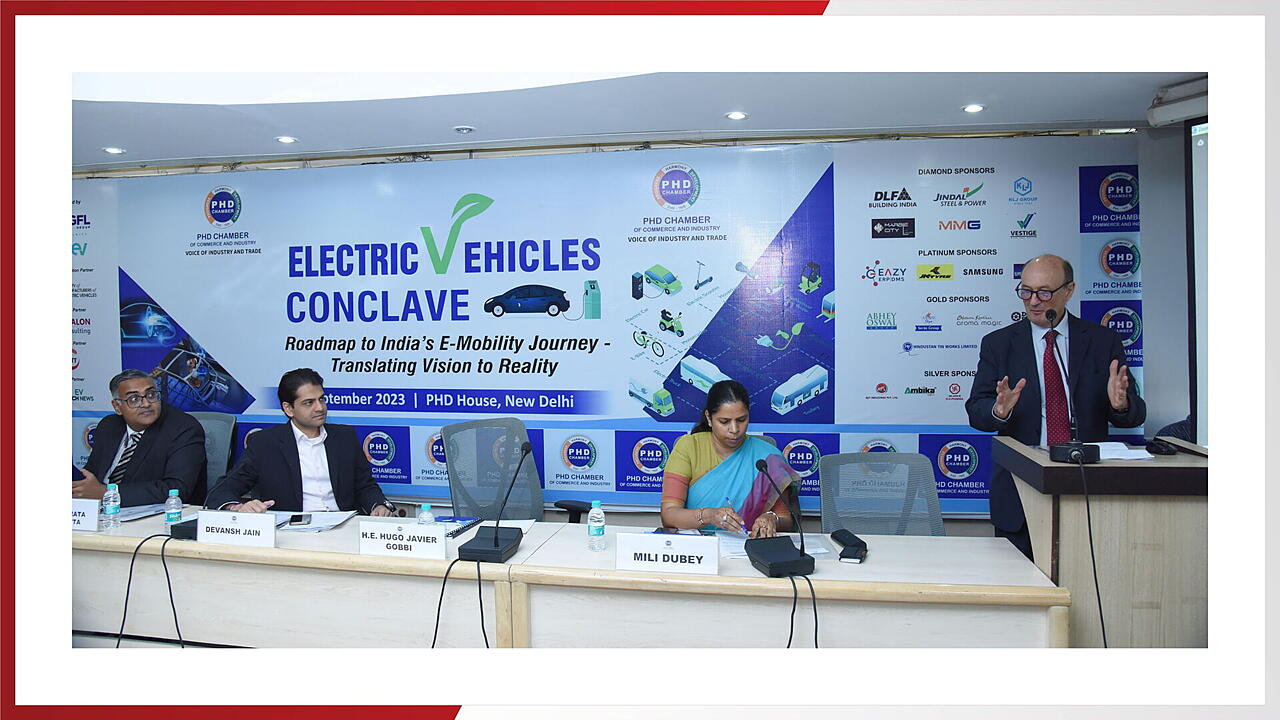
The latest knowledge report on ‘Charged for Success: India’s EV Landscape’, released by the PHD Chamber of Commerce and Industry, clearly states the commitment India Inc has towards fast-tracking EV manufacturing and adoption. While the ICE (internal combustion engine) suffered throughout the COVID-19 crisis, the EV industry was able to withstand the brunt by growing at 61% CAGR since 2018, as stated in the report.
With expected sales to reach 17 million units for EVs by 2030, India’s contributions to the electrification ecosystem are huge. Upcoming Government projects on EV charging networks will further strengthen the adoption of electric mobility across the country, noted Mili Dubey, Director, PHDCCI. “However, the sales of EVs need to be expedited in India”, she added. Every State in India has been falling behind in electric vehicle sales, with exceptions being Gujarat in terms of E2W and Rajasthan in E3W sales.
Leaving domestic sales aside, India needs to pick up the pace on manufacturing and exports of electric vehicles if it wants to establish itself as the leader in electric mobility. “ACC and PLI schemes have proved very crucial elements in aiding the manufacturing industry”, stated Devansh Jain, Chair, Renewable Energy Committee, PHDCCI. He believes that domestic manufacturing and strategic sourcing of rare earth elements are key to improving overall air quality and enhancing the efficiency of EVs. India also needs to work on reducing the acquisition cost of EVs, making them affordable, expanding the green charging network and integrating sourcing in the supply chain at the root level.
The research report has been done with Avalon Consulting as the partner. Subhabrata Sengupta is a partner at Avalon Consulting. He said India will never be self-reliant on lithium, even though we have found reserves in Jammu and Rajasthan. 'We will be completely dependent on imports for lithium, cobalt, neodymium, nickel and copper from countries like China, Japan, UK, USA, Norway, Canada, Saudi Arabia, UAE and Iraq. This is where Argentina, as a source for these rare earth materials, steps in,' he said.
“Why get lithium, copper and cobalt from China, US or UK when it can be bought directly from my country?” said Hugo Javier Gobbi, Argentinian Ambassador to India. Argentina has the potential to produce 30,500 tonne of lithium annually. And since more than 80% demand for these rare earth elements is going to come from electric mobility, India can greatly benefit from this partnership.
Considering the component market size, battery packs make the largest share of the $ 1254 million EV-specific market. As performance and endurance enhancement for batteries, the demand for rare elements will rise, too. Gobbi foresees an upcoming rise in the demand for copper, which can be directly sourced from Argentina.
The cathode of the battery is a critical component which is responsible for the energy density and power of the battery. This needs lithium combined with other elements like cobalt, nickel and manganese, which must be strategically sourced. “OEMs want to minimise magnet usage as most of this is imported from China, and they are working hard to reduce this dependence,” states Sengupta. This, too, will need more use of REEs like copper as a replacement.
Also Read